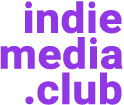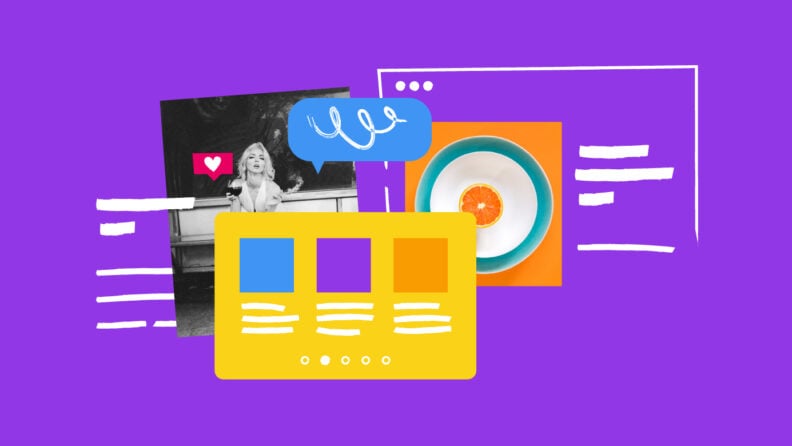Did you know digital publishing has been around since 1971? That was long before over 50% of the global population was actively using the internet daily—a number which we didn't hit until the 2010s!
However, many of us don't fully understand what digital publishing entails beyond the digital content we consume online such as social media, digital marketing, and maybe the occasional digital magazine.
This article will break down a working definition of digital publishing with some examples, explain how these digital publishing platforms make money, and share a digital publication or two that is killing it by creating some of the best digital content out there.
I’ll cover:
- What Is Digital Publishing?
- How Digital Publishers Monetize Their Content?
- Advantages Of Digital Publishing
- Digital Publishing Platforms
What Is Digital Publishing?
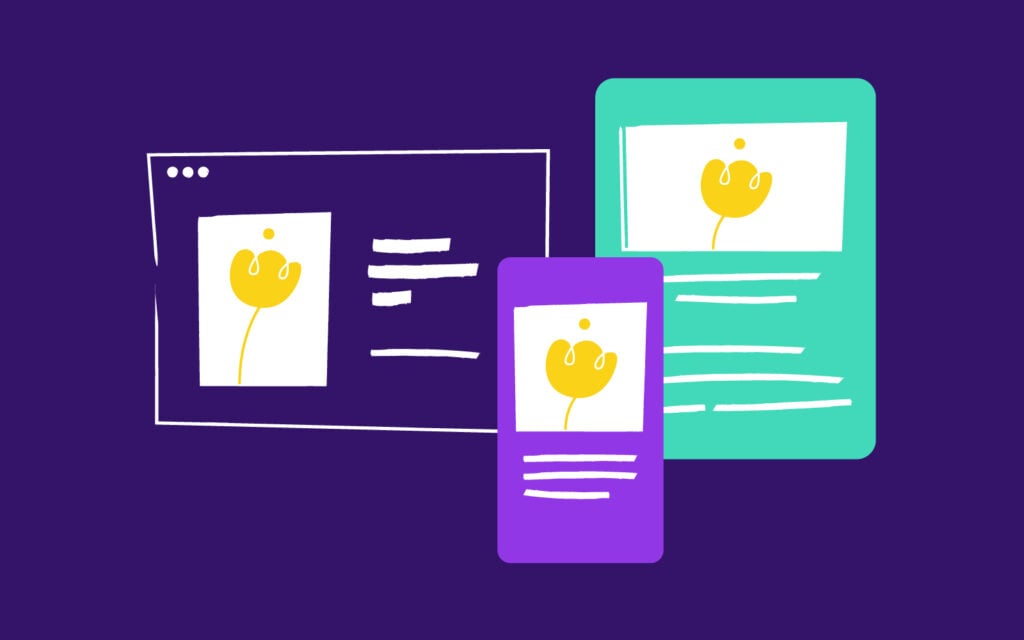
A digital publishing platform might refer to anything where digital content can be shared, such as a website (on which you might publish a web page), an app (like the most recent mobile game you played), or even email (like the newsletter you got in your email inbox). These are all platforms made possible by various advancements in digital technology we have come to experience daily.
Any information that has been published online or on other digital publishing platforms is referred to as digital media. If it can share digital media and online content, then it is a type of digital publishing platform.
Print publishing, on the other hand, is all the different types of information used in physical materials. Everything that can be printed, can also be made digital, but not necessarily the other way around. This is the core difference between the print publishing and online publishing industry.
For the past 50+ years, marketers have employed digital media in addition to printed materials. The market share is too big to ignore in our digital age. As a result, digital publishing, then, is a large part of what we now understand as digital marketing. It encompasses the entirety of the content marketing, content management systems, and publishing processes that make up the marketing copy and images associated with a brand.
Let's take a look at businesses and brands who label themselves as online publishers and what that means with some concrete examples of the content they create, who their audience is, and how they publish digital content.
What Are Digital Publishers?
As we mentioned, some brands and businesses take digital publishing to the next level and make it their entire business model. These kinds of businesses take a look at their niche market and generate content that dominates their particular share of the market and then distribute it across the entire industry.
As of 2021, there are a whopping 4.66 billion active internet users across the globe, according to a study by Statista. The best thing you can hope for is to attract some incredibly finite number of those users to visit your website, look at your products and services, and make sales with you instead of someone else. Publishing content online consistently, effectively, and professionally is the best way to do exactly this month after month.
Examples Of Digital Publishers
Some digital publishing companies are better at it than others when it comes to online publishing. Here are some of the best of the best with explanations as to why they are so good at what they do, the audience they are trying to reach, and a peek at the way they produce such high-quality content.
Stacked Marketer (E-Newsletter)
One great example of a digital publishing platform is email marketing. Stacked Marketer is an e-newsletter that is focused on all things marketing: trends, strategies, flops, major successes, and interviews with businesses doing things well. If you are thinking about digital media and digital content that is created and shared online, then e-newsletters are possibly one of the first things that come to mind.
Every day Stacked Marketer sends out an email curated with some of the most timely and influential pieces of marketing information on the internet. They do not mince words that their content is for people who take marketing seriously, and people who are career marketers. They have a mid-size team of 10+ who are working in multiple time zones, working on newsworthy pieces each day, and they have a streamlined process to take ideas from the pitching stage to the publishing stage in a matter of hours.
As a publishing platform, they don’t bother too much with websites and social media as much as they do with making all of their e-newsletter content as powerful and beneficial to readers as possible.
Google (Website)
Websites can be a type of digital publishing platform. In fact, Google is, arguably, the largest online publisher of all time. According to Visual Capitalist, Google has nearly 98 billion daily users!
While they are not creating and publishing their own content, they are incredible at curating the best of the best content on the web for their readers and creating a digital catalog of some of the best information on any given subject.
Google’s audience is anyone looking for an answer to a question. However, they do have a more narrow audience most people don’t think about: users who want to get their websites closer to the top of page one of a Google search engine result page! For this audience, Google has created all kinds of digital content and media about how to make this happen, which has created an entirely new field called Search Engine Optimization or SEO.
Vogue (Online Magazine)

Another major digital publisher is Vogue Online Magazine. Vogue is one of the most popular magazines in the US, but their digital subscription model boasts a wide profit margin compared to many competitors. While the vast majority of the content is the same as their print media version of Vogue Magazine, the ways they have created interactive content around their digital version of the magazine has made them a prime example of a digital publisher.
They curate content based on market research and by keeping a pulse on the trends of users and readers. This content is created and shared partially on their website in a blog-style format, as well as with a subscription to their online magazine via email. All of their digital content is created by professionals in the industry who keep tabs on all of this consumer data.
BikeRumor (Niche Website)
Not all of the best digital publishing platforms have the largest and widest audiences. Niche digital publishers can do just as well by having a much tighter focus. A great example of this is BikeRumor, who focus entirely on cycling tech news and information.
This is a hyper-specific niche where there seemed to be an audience with no one creating content for this specific audience. They are constantly searching and scanning the internet for news and getting publication requests directly from cycling tech companies. Their publishing process has been streamlined so that they are the first site to report on new and innovative cycling technology. If you want to hear more about BikeRumor, then check out our podcast interview with the Founder, Tyler Benedict.
So, yes, even a niche website, newsletter, etc. can be a great digital publishing platform as long as they are doing the right work and creating great processes.
How Digital Publishers Monetize Their Content?
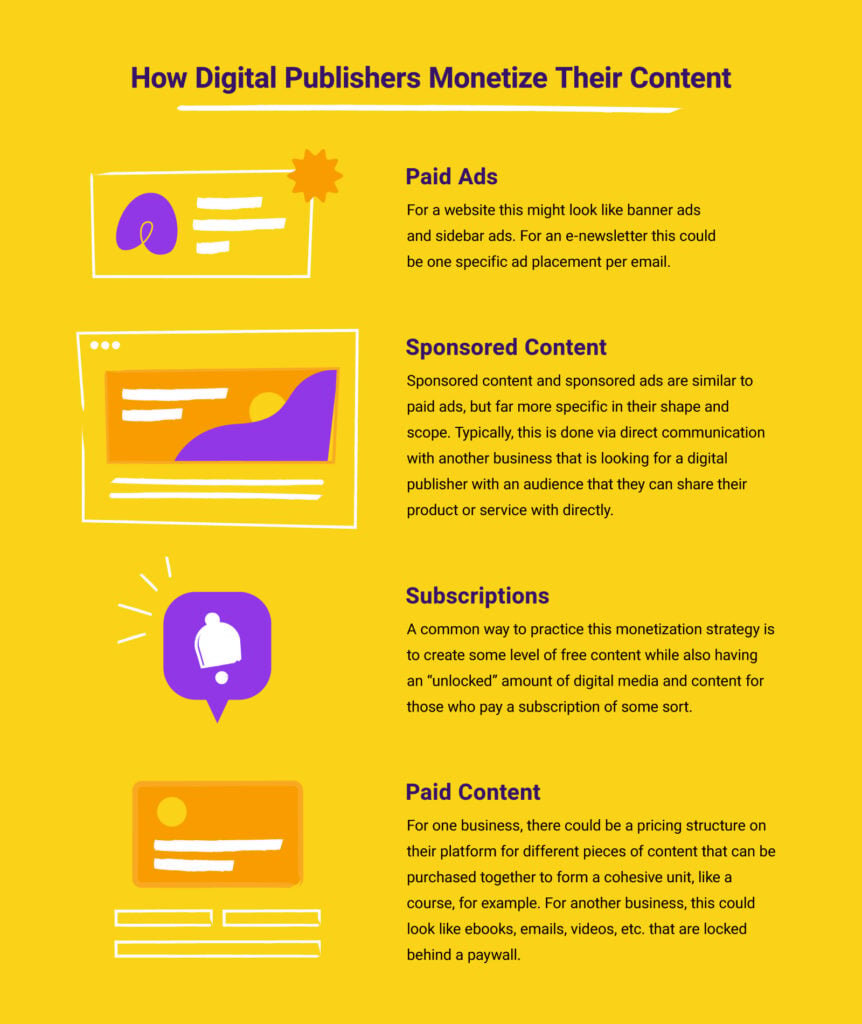
The beautiful thing about becoming a digital publisher is the ability to monetize the content in so many ways. Whether you are looking to add digital publishing to an existing business or setting out to create a new digital publishing platform, you can find the monetization strategy that makes the most sense for your business or brand.
There are a lot of unique approaches to monetizing content, but we will cover the most popular and common ones that publishers use to start out and scale their platform as time goes on: paid ads, sponsored content, subscription models, and paid content.
Paid Ads
Paid ads are where most digital publishers start out. Once you have your platform set up, paid ads are easy to integrate in most digital media and content. For a website this might look like banner ads and sidebar ads. For an e-newsletter this could be one specific ad placement per email. There are a plethora of ad platforms out there to choose from and play around with to see what fits your particular business model the best.
Sponsored Content/Ads

Sponsored content and sponsored ads are similar to paid ads, but far more specific in their shape and scope. Typically, this is done via direct communication with another business that is looking for a digital publisher to share their product or service with an audience directly.
The business paying for the sponsored content will have a much larger say over what is written in the content, what words are to be used, and is often associated with an ad script. These are also common with podcast and radio advertisements (both of which can be another great form of digital publishing). Not all businesses or brands are suited for sponsored content, but for those businesses where it makes sense, then it can be a great way to monetize your platform content!
Subscriptions
We all pay monthly and annual subscriptions for a variety of products and services. The same can be done for your digital content.
A common way to practice this monetization strategy is to create some level of free content while also having an “unlocked” amount of digital media and content for those who pay a subscription of some sort. This could be more of the same content, similar content in a different medium, or even something like access to a community where the audience can all communicate and interact with the content together.
Some businesses find a lot of success with this strategy while others flop because they don’t utilize their digital publishing platform to its full potential and just create content that could have instead been paid content.
Paid Content
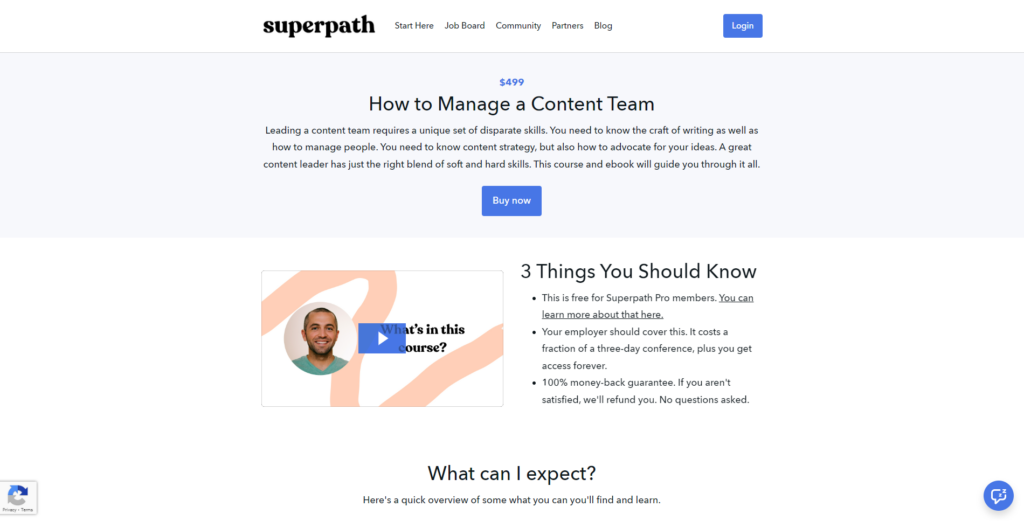
Paid content can have a few different forms and meanings. For one business, there could be a pricing structure on their platform for different pieces of content that can be purchased together to form a cohesive unit, like a course, for example. For another business, this could look like ebooks, emails, videos, etc. that are locked behind a paywall. The form and shape of the content will largely depend on your audience, their needs, and the structure of your digital publishing platform itself.
The most important thing to keep in mind for paid content is that people will expect it to be much higher caliber content if they are paying for it. Even compared to a subscription model, your audience may have higher expectations for a la carte paid content.
Advantages Of Digital Publishing
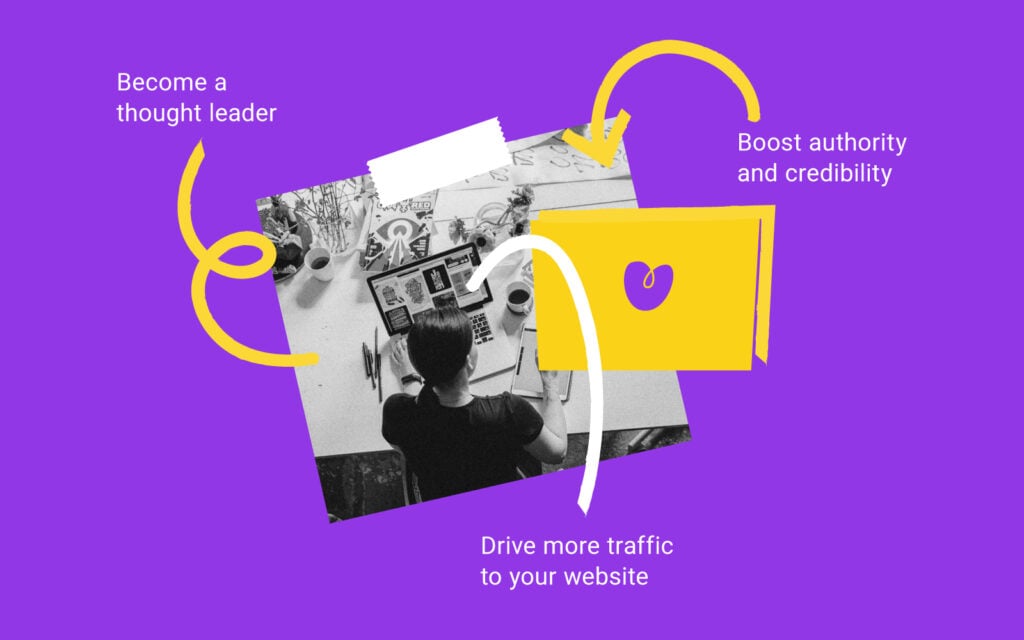
Aside from creating an additional source of revenue for your business, building out a strategy to become a digital publishing platform has a few enormous advantages.
A hot word being thrown around now is “thought leadership.” If your business builds up authority in your industry by generating content about your industry and staying ahead of norms and trends rather than waiting to follow them, then you are moving into the thought leadership space.
Becoming a thought leader in your industry gives yourself and your business a boost of authority and credibility, which only drives more traffic and revenue towards your business. When you begin to create authority around your business, then so many more doors open for additional revenue sources.
While it may not be a goal of your digital publishing efforts, there are some strategic outcomes that you can use to your advantage. For example, maybe you get invited to become a speaker at an industry-specific conference. Better yet, maybe you are asked to be the keynote speaker. You might even find that others in your industry look to you to create some kind of conference. All of these can create a lot of buzz about your business and only further your credibility and increase revenue.
All of this hinges on doing the work well, though. For that, you will need the right digital publishing platform tools, so let’s talk through some of those next.
Digital Publishing Platforms
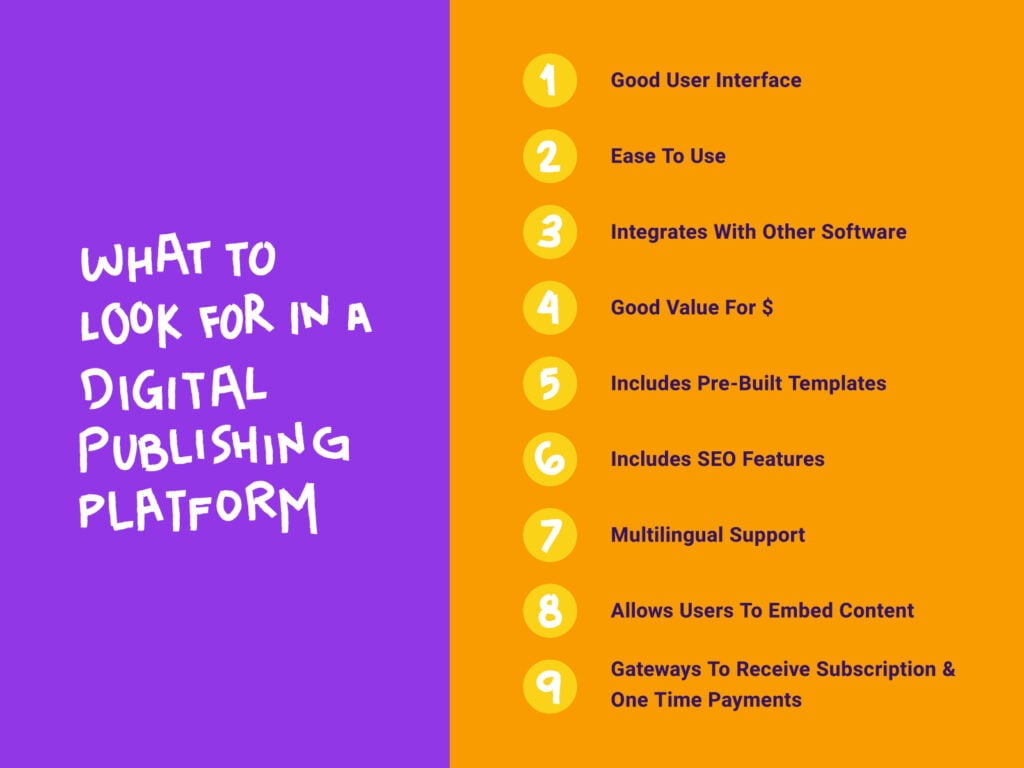
If you are wanting to either become a digital publisher or move your business into digital publishing, then you are going to need the right tools for the job. Everyone’s tech stack is going to look a little different based on the niche and industry, but there are some digital publishing tools that are too good to pass up for anyone.
For this conversation, we are going to refer to these tools as digital publishing platforms because they will often give you several key tools to use, and because digital publishers often create and use their own proprietary digital publishing software, too. For a more comprehensive list, we recommend reading this roundup article on the best digital publishing platforms.
To start becoming a digital publisher, you are going to need tools that will help you: host your digital publications, generate and create content, and make publishing your digital content painless.
Hosting Digital Media and Content
For all of your digital publishing, you will need somewhere for your content to call home. This could be a website, an email newsletter, an easily accessible digital storage option, etc.
Once you have decided what medium makes the most sense for your business, then you will need to find a suitable host. If you are going to be building out a website with lots of blog content, for example, then a digital publishing platform that can let you build pages for your website is going to be invaluable.
As another example, if you are going to be using a digital publishing platform for ebooks, PDFs, and other digital written content and materials, then you will need to find a hosting platform to store your digital content. That being said, we highly recommend using WordPress for websites and a digital publishing platform like FlippingBook to create other types of written content that can be stored and read directly.
Creating Digital Publishing Content
You are going to need a tool or software to help you create your digital publishing content, which means you need to know exactly what kind of content you will be creating and who your audience will be. There are certain digital publishing platforms that will better equip you for written content creation, digital media creation, or even audio and video content.
There are dozens of great content creation platforms, but the most simple to use are software tools such as Google Docs, Dropbox, Canva, and other free and easy-to-use platforms. If you want to do something a little more technical, then digital publishing platforms like ReadyMag, Optimizely, and Ceros are great options to help you generate and create content.
Publishing Digital Content
Aside from the obvious places to publish like on social media and website channels, there are other digital publishing platform options to choose from that can help with distributing your digital content. These can be fairly universal with automation software and tools like Zapier and Make.io, but can be more niche specific, too.
A digital publishing platform like Issuu can help you distribute and publish your online magazine much simpler and faster. While IngramSpark can help you create, publish, and distribute your ebooks and PDFs more effectively.
When you know your goals, audience, and strategies for your digital publisher business, then you can select the best digital publishing platform for your needs.
Ready To Become A Digital Publisher?
We’ve covered the definition of digital publishing, given some examples of the best digital publishers on the market, defined some ways to monetize a digital publishing platform, and even given you some of the best tools and software to consider as you get started. Do you think we missed anything? Comment below if you want to know more or reach out and let us know directly!
If you think you are ready to learn even more about the digital publishing industry, then sign up for the Indie Media Club newsletter to get even more knowledge dropped on you. With a bit of guidance, gumption, and prodding you’ll be up and running in no time!
